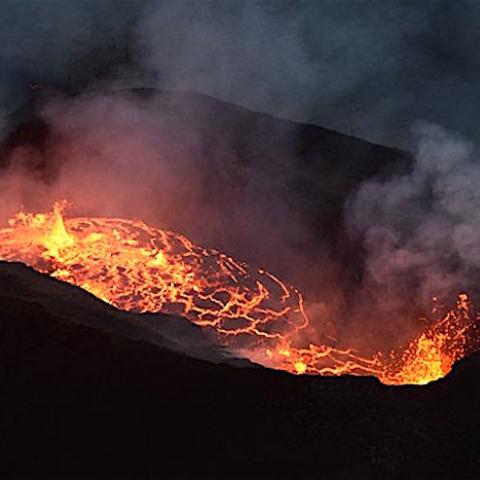
The Kīlauea volcano has resumed eruptions at Hawai'i Volcanoes National Park/USGS
Not quite three months after its last eruption stopped, the Kīlauea volcano at Hawai'i Volcanoes National Park has erupted again, with lava fountains climbing more than 80 feet into the sky, according to the U.S. Geological Survey.
There were no indications of unrest along the volcano's East Rift Zone, which spewed lava into nearby communities during the disastrous and long-running 2018 eruption, nor the Southwest Rift Zone, the agency said.
The latest eruption began Sunday afternoon, with activity confined to Halemaʻumaʻu crater and the downdropped block to the east of the crater, within Kīlauea's summit caldera. By 7 p.m. local time, multiple minor fountains remain active in the eastern portion of Halema‘uma‘u crater floor and on the downdropped block within Kīlauea's summit caldera. The line of fissures stretches approximately 0.8 miles (1.4 km), from the eastern part of Halema‘uma‘u crater floor extending into the east wall of the downdropped block.
Lava erupted from fissures on the downdropped block was flowing in a westward direction towards Halema‘uma‘u crater, the eastern portion of which is covered with actively flowing lava, the Hawaiian Volcano Observatory reported.

The eruption was contained within the volcano's summit crater/USGS
Volcanic gas emissions in the eruption area were initially elevated, with preliminary sulfur dioxide emission rates of up to 100,000 tonnes per day or more, the staff said.
The 2018 eruptions continued for about four months, causing tens of millions of dollars in damage to the national park and sending lava across 13 square miles of the island. Thousands were forced thousands to evacuate their homes, and more than 700 homes were destroyed by the eruptions.




 Support Essential Coverage of Essential Places
Support Essential Coverage of Essential Places







Add comment